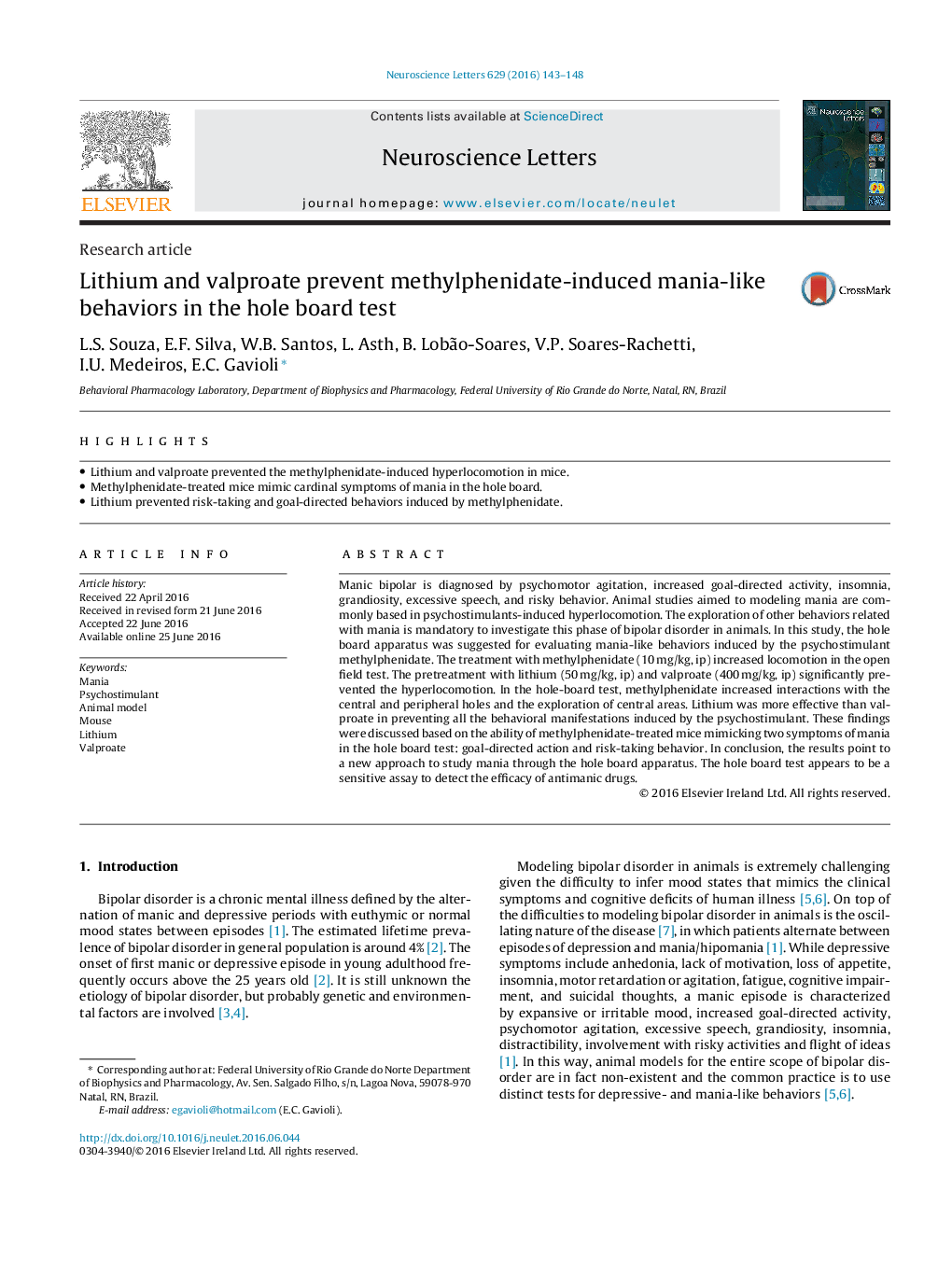| Article ID | Journal | Published Year | Pages | File Type |
|---|---|---|---|---|
| 4343227 | Neuroscience Letters | 2016 | 6 Pages |
•Lithium and valproate prevented the methylphenidate-induced hyperlocomotion in mice.•Methylphenidate-treated mice mimic cardinal symptoms of mania in the hole board.•Lithium prevented risk-taking and goal-directed behaviors induced by methylphenidate.
Manic bipolar is diagnosed by psychomotor agitation, increased goal-directed activity, insomnia, grandiosity, excessive speech, and risky behavior. Animal studies aimed to modeling mania are commonly based in psychostimulants-induced hyperlocomotion. The exploration of other behaviors related with mania is mandatory to investigate this phase of bipolar disorder in animals. In this study, the hole board apparatus was suggested for evaluating mania-like behaviors induced by the psychostimulant methylphenidate. The treatment with methylphenidate (10 mg/kg, ip) increased locomotion in the open field test. The pretreatment with lithium (50 mg/kg, ip) and valproate (400 mg/kg, ip) significantly prevented the hyperlocomotion. In the hole-board test, methylphenidate increased interactions with the central and peripheral holes and the exploration of central areas. Lithium was more effective than valproate in preventing all the behavioral manifestations induced by the psychostimulant. These findings were discussed based on the ability of methylphenidate-treated mice mimicking two symptoms of mania in the hole board test: goal-directed action and risk-taking behavior. In conclusion, the results point to a new approach to study mania through the hole board apparatus. The hole board test appears to be a sensitive assay to detect the efficacy of antimanic drugs.
